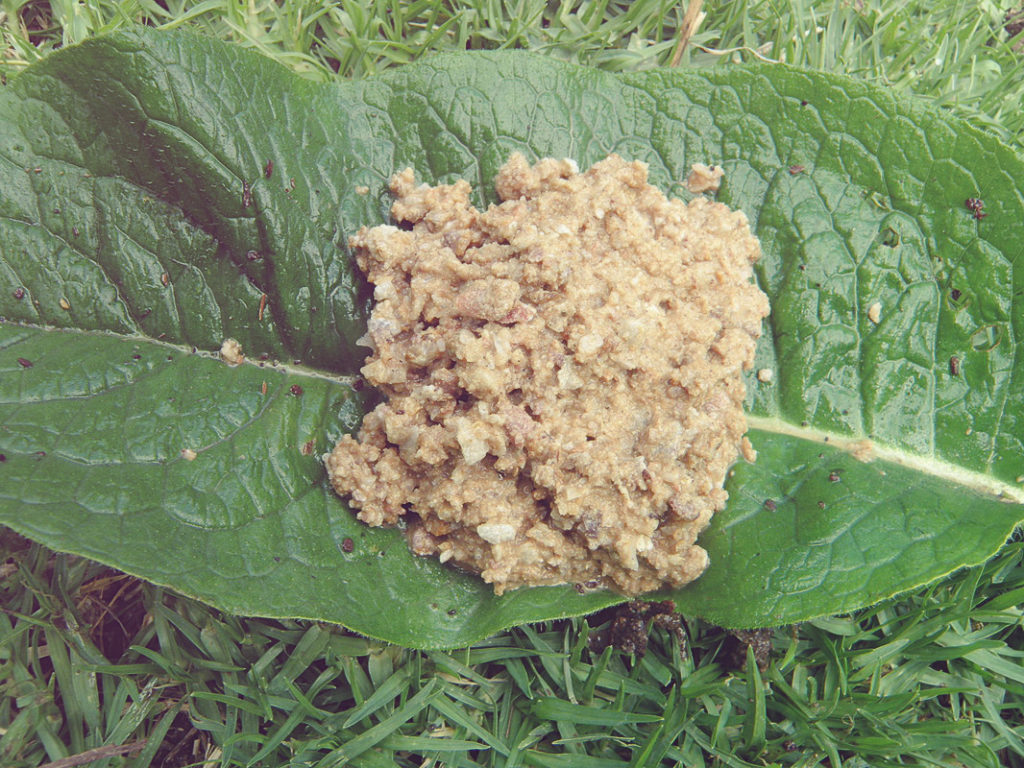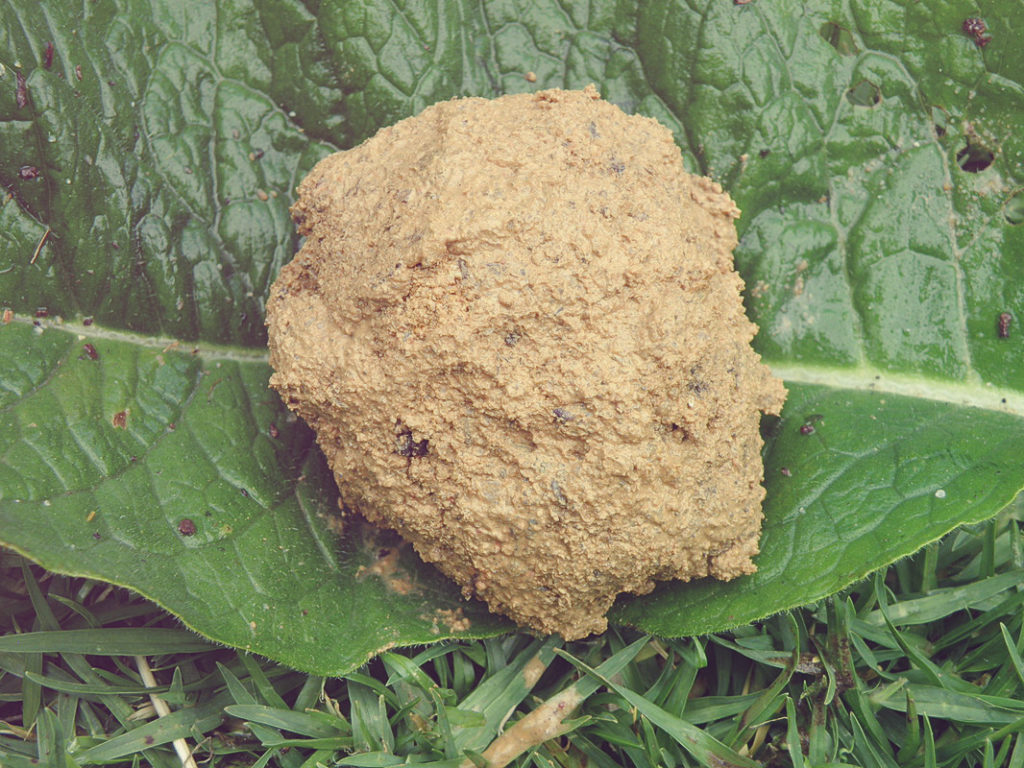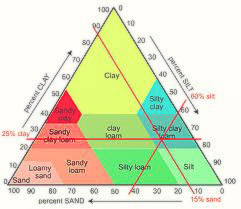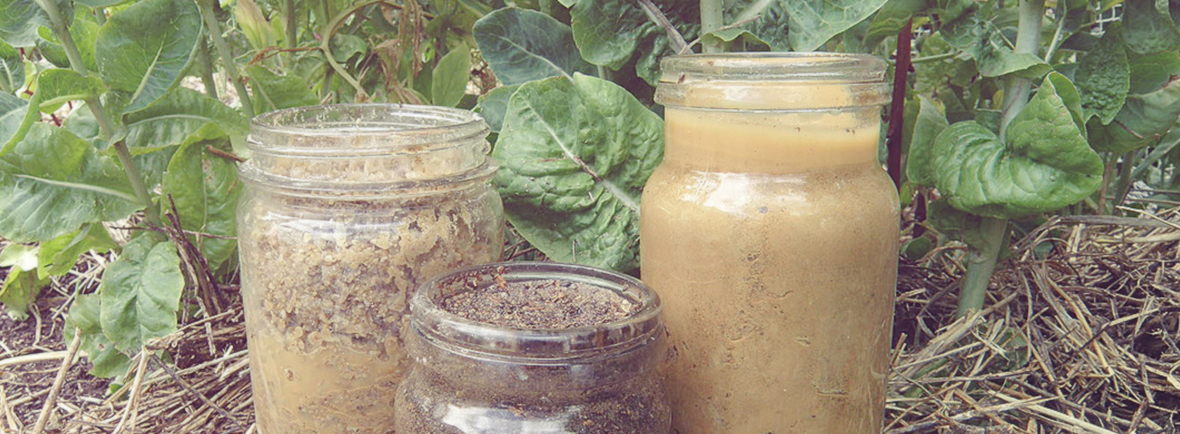SOIL STRUCTURE AND TEXTURE
This post attempts to give you a snapshot view of two vital aspects of soil, texture and structure. It is important to become familiar with the nature of your soil, as this will help determine your success in the garden. The loose, dark, rich earth of fabulous gardens doesn’t just happen – it is created by keen gardeners working to enhance their natural soils.
The great news is that most soil can be improved to help you create a beautiful, luscious and productive garden.
SOIL TEXTURE refers to the size of the mineral particles in the soil and is the most basic physical property of soil.
The size of the soil particles involves two main aspects:
- The total surface area of the particles in a patch of soil
- The pores or spaces between the particles
SAND has the largest particles and they are irregularly shaped, composed mainly of weathered grains of quartz. The particles do not stick to one another, and have large pores that improve water and air going into the soil. However a large amount of sand in soil lowers its ability to retain water and nutrients.
SILT particles are medium sized, irregularly shaped and silky or powdery to the touch. The grains in silt do not stick to one another, and have a good ability to hold large amounts of water in a form that plants can use.
CLAY has the smallest soil particles that are almost flat. They result from chemical reactions between weathered minerals to form tiny particles of new minerals. The new minerals are able to bond nutrients chemically to their surfaces and help hold those nutrients in the soil. Clay particles stick to one another and can be moulded. Soils with high clay content are usually less aerated and water seeps into them more slowly.



The proportion of the three types of soil particles; sand (large), silt (medium) and clay (small) will determine the soil type. Clay is on one end of the spectrum, with sand at the other end, with many mixtures in between.

Soil type is important as it affects such soil traits as water-holding capacity and aeration. For example,
- Soils with the smallest particles, like clay, have the largest total surface area and hold the most moisture and nutrients. The smaller the particles in the soil the more water and nutrients the soil can retain.
- Pores are necessary for aeration and drainage, so where pores are large (between larger particles such as sand), aeration and drainage will increase.
- These soil traits can also be negative, as clay can become water-logged and be hard for roots to grow through, whereas sand can leach nutrients and dry out quickly.
The different types of soil refer to their mechanical makeup, but do not give much clue to the value for growing plants. We tend to associate dark loams with rich soils, yet they may be poorer than some clay or sandy soils. One clue is to read your plants – do they look healthy? Are they producing flowers or fruit? Do they need constant water or fertilizer?
In general, natural soils usually have all three types of particles, the proportion of the three giving the soil its texture classification, for example, sandy clay, silty clay or loam (see the soil texture triangle above). For the home gardener broad classification of soil is usually adequate, and most of us aspire to the rich, dark, productive and organic LOAM. This is soil in which sand, silt and clay contribute equally to the property of the soil.
IN THE GARDEN –
- Texture influences how easily a soil can be worked, and how water and nutrients are held and available for plants.
- Fine soils (high proportion of clay) retain water and plant nutrients better than coarse soils (high proportion of sand) and clay particles have the best holding ability for nutrient chemicals. However, fine soil is ‘tight’ and small pores can make it difficult for air and roots to penetrate.
- Coarse soils are ‘loose’ and well aerated but can be poor in nutrients and lack water-holding capacity.
- Medium soils such as loam have the good traits of both coarse and fine soils without their bad traits. They can hold water but not too much, be easier to work, and contain nutrients for the plants.

Here is a simple test for assessing the texture of your soil, based on the feel of damp soil and how easily it can be moulded.
RIBBON OR FEEL TEST
1. Obtain enough soil to form a 2 cm ball with no gravel or debris.
2. Moisten the sample and work the soil until it is uniformly moist.
3. Note the feel of the soil – sand feels gritty, silt feels smooth, clay feels sticky.
4. Mould the sample into a ball and lightly squeeze. If it breaks at the slightest pressure, it is a sand or coarse sandy loam. If it stays together but changes shape easily, it is a sandy loam, loam or silt loam. If it resists moulding, it has a high quantity of clay.
5. Squeeze a ribbon between thumb and forefinger, noting how long it can be formed before it breaks
a. no ribbon – loamy sand
b. ribbon shorter than one inch – loam, silt, silt loam, sandy loam
c. ribbons one to two inches long – sandy clay loam, silty clay loam, clay loam
d. ribbon two to three inches long – sandy clay, silty clay, clay
SOIL STRUCTURE refers to the way soil particles clump together in larger units called soil aggregates. Good structure can improve air and water movement making it easier for roots to grow while maintaining good water-holding capacity within the aggregates. In general, sandy soil behaves like individual grains so seldom have much structure, while clay soils can be like a solid mass stuck together like moulding clay. A good soil structure is crumbly. This allows plant roots to work their way through the soil and water to enter easily. It should also drain well, but not so quickly that the plants can’t access it and nutrients are leached out. Good soil structure is also well aerated.
THINGS TO DO TO IMPROVE YOUR SOIL
ORGANIC MATTER
Organic matter improves any type of soil by;
- Loosening and enriching soil and providing food for soil dwelling creatures.
- Improving water and nutrient holding capacity.
- Improving texture by keeping soil loose and light.
- Encouraging soil dwelling creatures to aerate the soil and add small amounts of organic matter, improving the soil structure further.
BE CAREFUL TO….
- Check recommendations for applying fertilizer, treatments to adjust pH, and other applications of chemical substances to soil – many give different rates for different types of soil.
And here are a few important ‘don’ts’
- Don’t walk on wet soils, especially clay. Compressing the soil packs the soil particles tightly and squeezes out vital oxygen. Plan for paths or stepping stones, or use a board to cover the soil when planting.
- Don’t work on wet clay.
- Don’t overwork your soil. Tilling soil can loosen soil structure, which is good when adding organic matter. However regular tilling can destroy the aggregates in the soil and also kill living creatures living there.
- Don’t mix soil types that are too different in texture. Mixing sand and clay will give you cement! Too often sandy loam is placed on a clay base, and while the garden looks great for a while, the two will not mix and results will be disappointing.
Until next time,
Amanda


